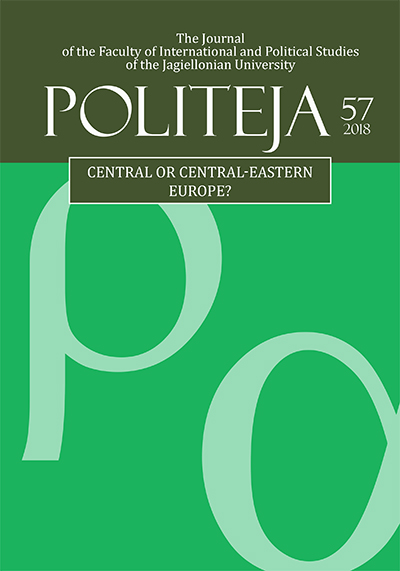Does the Name Matter? Central Europe and Central‑Eastern Europe in Different Variations and Configurations
Does the Name Matter? Central Europe and Central‑Eastern Europe in Different Variations and Configurations
A Comparative Analysis of Polish and Czech Discourses
Author(s): Radosław Zenderowski, Dušan JanákSubject(s): Politics / Political Sciences, Geopolitics
Published by: KSIĘGARNIA AKADEMICKA Sp. z o.o.
Keywords: Central Europe; Central‑Eastern Europe; Central and Eastern Europe; Poland; Czech Republic
Summary/Abstract: This article points at differences and similarities in ways of defining Central Europe and Central‑Eastern Europe found in Polish and Czech academic discourse. The aim of the article is, firstly, to identify these differences and similarities, and secondly, to indicate the probable reasons for their existence. In order to accomplish both goals, the authors analyze selected narratives of Czech and Polish historiography and the terms present in both kinds of discourse under analysis. The analysis is based on a selection of texts considered relevant and influential. The time span covered in the article is the period from the First World War to the present times, with particular emphasis on the period from the 1970s onwards. In spatial terms, the article focuses on influential Polish and Czech authors working either in their home countries or abroad, as émigrés. The object of study is discourse understood as a communication activity in which meanings are continuously constructed. The article takes into consideration the following issues: (1) the popularity of the notions of “Central Europe” and “Central‑Eastern Europe” in both discourses; (2) the evaluation of these concepts – namely the attribution of some positive and negative features to them; (3) the presentation of the topoi of Central Europe and Central‑Eastern Europe in Polish and Czech discourses (the views concerning their spatial extent and borders); (4) political operationalization of these concepts in the form of integration (geopolitical) projects.
Journal: Politeja - Pismo Wydziału Studiów Międzynarodowych i Politycznych Uniwersytetu Jagiellońskiego
- Issue Year: 15/2018
- Issue No: 57
- Page Range: 231-257
- Page Count: 27
- Language: English

